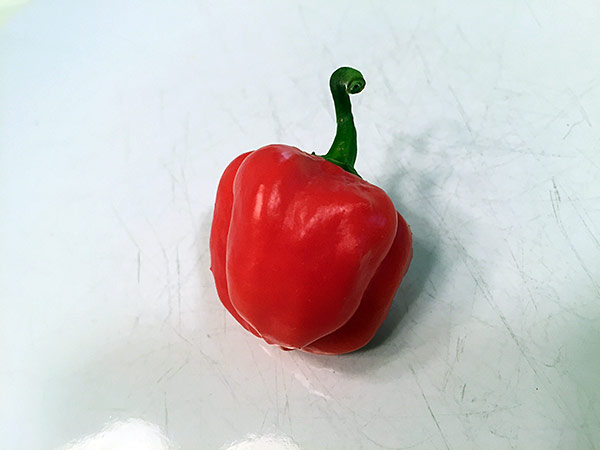Caribbean Red Pepper Review
Before we actually get into the meat (vegetable) of this pepper review, there’s some Sherlock Holmes’ level sleuthing that needs to occur.
Last year, I grew Carolina Reapers and Orange Habaneros that I had purchased as seedlings from a local nursery. At the end of the 2016 season, I harvest and collected seeds, labeling each package appropriately. In February, I started sowing the seeds, again, labeling everything properly — or at least I thought.
Everything progressed through the past few months according to plan, that is, until peppers on a plant labeled as a Carolina Reaper started coming in. The pods looked like they were possibly Scotch Bonnets or, as a few Twitter friends suggested, Caribbean Red. And this is where I could use Mr. Holmes’ assistance. I did not collect nor sow any Scotch Bonnet seeds from last year and I didn’t even have any Caribbean Red plants in my bevy of plants.
How I ended up with this pepper is a complete mystery that has been baffling me since it started ripening. But, as you can see by the following photo, there it is… a Caribbean Red (or red habanero if you will).

This pepper isn’t overly large, out-sizing a quarter by a few millimeters. It’s probably not fully ripe as there’s a bit of an orangish red tinge still lingering. The skin is fairly smooth with the exception of a few tiny spikes/thorns that cluster together on one side. It’s a medium-walled chili with a small amount of placenta and moderate number of seeds.

It smells like a habanero, but with a more floral, almost perfumey, presence. There’s a soft fruitiness in the mix as well as the smell of “heat.” It’s not an unpleasant aroma, but that floral trait was a bit unexpected.
The flavor almost follows the aroma to a tee. It’s floral with a soft fruitiness and fairly standard “pepper” flavor. It’s got an overall bright character as you crunch through the snappy skin. The flavor hangs around for a good long while as the heat hits.
And that burn is pretty darn fiery. The heat engulfs the tongue briskly spreading slowly to the roof of the mouth before slowly trailing down the throat. The burn lasts a good long while, peaking after a minute or two and then fading to a lingering tingle. It’s definitely must hotter than your standard orange habanero that I’ve grown in the past.

As with just about any habanero, this one can accompany any dish. I tossed the remaining half of mine into grilled steak fajitas later in the evening. It added a good amount of fiery heat without impacting the flavor, which is a bit surprising considering its strong floral quality. At any rate, I’ll keep eating the pods that come off of this plant and maybe I’ll collect some seeds. I’m still confused as to how I got this plant to begin with as I didn’t sow or even own any to begin with. Peppers can be wacky.